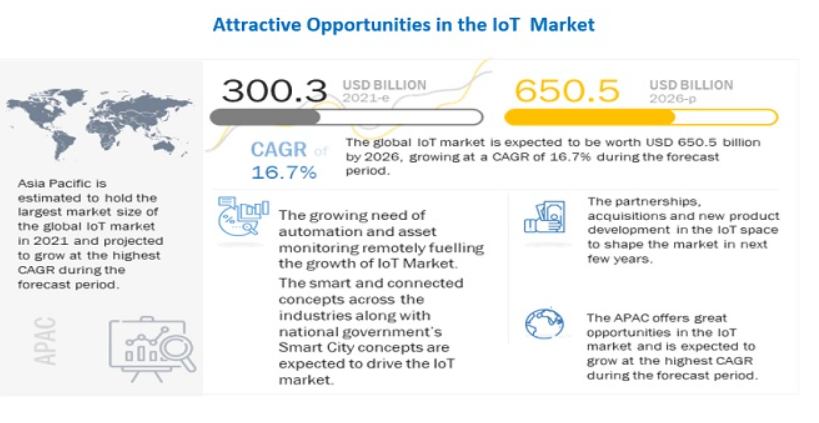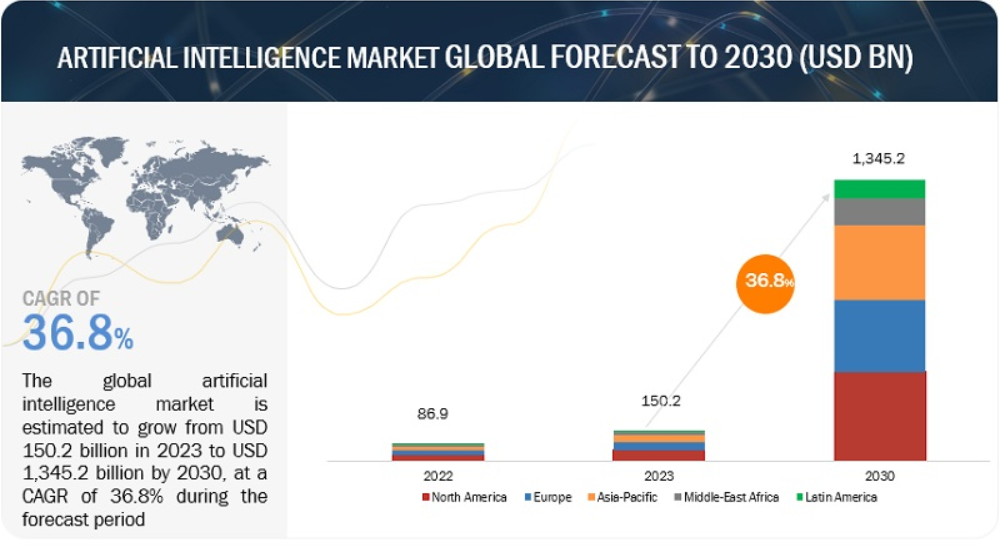Today, IoT and AI are the building blocks for anything digital and disruptive. These mind-blowing concepts will bring about more connection, intelligence, and automation. Although they look quite similar, they have different applications, procedures, and consequences.
So, what is the difference between IoT and AI? It depends on a thorough analysis of each concept’s basic principles. Because it links physical things and places, IoT modifies how we perceive and deal with the world. However, AI gives robots human-like intelligence that helps them learn, reason, and make decisions.
While venturing into the digital world, we will discover the impact of IoT and AI on technology evolution. With this journey of awareness, we wish to gain the intellectual and emotional resources to use IoT and AI to improve society and mankind. Read on to dig deeper into the major difference between the Internet of Things and Artificial Intelligence.
About the Internet of Things (IoT)
The Internet of Things (IoT) completely alters how we look at and interact with the world. The Internet of Things, or IoT, is a network of devices containing sensors, software, and other technologies that can collect and share data over the Internet without human intervention. These devices, from domestic appliances to industrial tools, integrate into one another and into centralized or decentralized systems to build a massive network of nodes. According to reports, the IoT market is set to cross $600 billion by 2026.
By bringing together the physical and the digital world, IoT turns static objects into intelligent beings who can perceive, analyze, and act upon their environments. Sensors in IoT devices are used to sense temperature, humidity, pressure, motion, and location in real-time. For storage, processing, and interpretation, this data is conveyed to cloud or edge computing units.
The IoT applications are diverse and wide-ranging. IoT Devices enable smart homeowners to remotely switch on/off appliances, lighting, security cameras, and thermostats, improving ease, comfort, and economy of energy among residents.

Some recent applications of IoT:
- Consumer applications: elder care, smart home.
- Organizational applications: transportation, V2X communications, medical and healthcare, building, and home automation.
- Industrial applications: maritime, manufacturing, agriculture
- Infrastructure applications: energy management, environmental monitoring, metropolitan scale deployments.
- Military applications: the ocean of things, internet of battlefield things.
- Product digitization.
Must Read: IoT Will Impact the Future of Custom Web Development
About Artificial Intelligence (AI)
AI has elevated human intellectuality in technology and tries to make computers as human-like as possible. AI integrates different methods, models, and algorithms that model the human mind’s learning, thinking, problem-solving, perception, and decision-making processes.
Artificial intelligence stands out for its ability to process enormous amounts of data, recognize patterns, and obtain information that can’t be had through traditional computational methods. According to market reports, AI is set to generate $1300 billion by 2030.
AI’s machine learning field focuses on methods that let the machines receive data and improve their performance and predictions. Deep learning mimics the human brain and uses artificial neural networks to model advanced data relationships and structures to pave the way for breakthroughs such as image recognition, natural language processing, and speech recognition.

Here are some of the most innovative potentials of Artificial intelligence in the business world:
- AI is multifaceted and greatly influences. It helps autonomous cars perceive their surroundings, make real-time decisions, and traverse complex areas alone, opening a window into a new era of mobility and transportation.
- AI-enabled virtual assistants such as Amazon’s Alexa and Apple’s Siri incorporate natural language processing and machine learning to provide answers, facilitate tasks, and tailor the user experience.
- AI could change the healthcare domain’s diagnosis, treatment, and patient care. AI-powered diagnosis machines can analyze medical images, genomic data, and electronic health records, enabling clinicians to detect and diagnose diseases earlier and make more precise and tailored treatment regimens.
- AI in medicine discovery utilizes machine learning algorithms to identify new medication potentials, predict effectiveness and safety, and speed up the development of medications to treat currently unmet medical needs and bring about desired patient outcomes.
Read more: Explore The Potential Of AI And IoT Technologies In The Business Sectors
Head-to-Head Difference Between the Internet of Things and Artificial Intelligence
-
Data Source and Processing
Most IoT devices use physical information as their data source. These instruments have sensors that assess temperature, humidity, motion, location, and other attributes. IoT devices collect raw data from sensors for further analysis or decision-making. A smart thermometer measures temperature in real time, and agricultural IoT devices monitor soil moisture, among other things.
IoT devices send data to central or distributed systems via Wi-Fi or Bluetooth. Data is aggregated, filtered, normalized, and stored on cloud platforms or edge computing systems. Stakeholders can analyze, visualize, and decide on processed data to obtain insights into their operations.
Whereas, AI processes and analyzes data to gain insights and make decisions, as opposed to IoT, which collects and transmits the data. Data from IoT devices and other sources are used for AI algorithms’ training, validation, and inference. In contrast to IoT devices, which collect raw data from sensors, AI systems process or preprocess data.
AI methods like machine learning, deep learning, and natural language processing let computers learn, recognize patterns, and predict. In computer vision, AI algorithms detect objects, identify anomalies, and classify IoT camera images. AI algorithms can extract meaning, sentiment, and intent from natural language processing of the text input of IoT devices.
IoT and AI are different in the sense of data lifecycle functions. IoT devices gather and send sensor data about the physical world. Nevertheless, while downstream in the data processing pipeline, AI systems utilize data for complex analytics, conclusions, and decisions.
-
Functionality and Decision-Making
Internet of Things devices’ primary role is to gather and send physical data to centralized or distributed systems for further processing and analysis. IoT devices can perform operations such as filtering and summarizing the data but cannot make decisions as AI systems do. The IoT devices have specific rules or thresholds for notifying or acting on data. The smart thermostat may monitor the temperature to suit comfort levels or energy-saving objectives.
Conversely, AI systems are superior to IoT devices in operating and decision-making. AI algorithms can analyze data, recognize patterns, and forecast without human participation. Artificial intelligence systems can learn data using machine, deep, and reinforcement learning algorithms.
AI allows for natural language translation, image recognition, predictive analysis, and intelligent decision-making. AI-powered recommendation systems can generate personalized content and product recommendations by analyzing user patterns and behaviors. AI systems also endow autonomous vehicles with the ability to see, think, and navigate critical situations.
-
Adaptability and autonomy
IoT devices are either centralized or cloud-based for their intelligence and decision-making. They can be pre-programmed to perform certain tasks autonomously but usually adhere to instructions or directives of users or system administrators. For example, a smart home security system could notify the homeowners’ smartphone if a motion is detected while they are away.
Internet of Things systems may lag behind AI systems in their ability to dynamically adjust to changing situations or increase efficiency without human intervention. Manual reprogramming or firmware updates for IoT devices can be time-consuming and laborious.
In contrast, AI systems are more independent and flexible than IoT devices. AI models can respond to varying inputs and goals at runtime after being trained. Reinforcement learning enables AI systems to maximize performance and accomplish objectives in complex and unpredictable situations.
Data-driven AI systems can change their behavior without reprogramming. Using User feedback, AI-enabled chatbots can provide better responses to requests. Autonomous vehicles’ navigation can be influenced by real-time traffic, weather, and environmental factors.
-
Applications and Scope
IoT encompasses many devices, sensors, and systems connected to the internet for data exchange and cooperation. The Internet of Things is used in smart homes, cities, industrial automation, healthcare monitoring, environmental monitoring, agricultural management, and logistics tracking. IoT enables joint monitoring, predictive maintenance, and intelligent automation of physical processes, thus increasing efficiency, productivity, and convenience. In agriculture, IoT sensors can optimize irrigation schedules and crop yields by monitoring soil moisture, temperature, and humidity. Healthcare wearable IoT devices can observe vital signs and aid caregivers during crises.
On the other hand, Artificial Intelligence automates industry and society. AI is used in the fields of autonomous vehicles, virtual assistants, fraud detection, predictive maintenance, personalized healthcare, recommendation systems, language translation, and autonomous robotics.
AI enables computers to execute complex cognitive jobs, strengthen human abilities, and increase creativity, productivity, and innovativeness. Financial AI systems can evaluate market trends, spot anomalies, and improve investment plans. AI-based diagnostic instruments can analyze medical images and EHRs to help doctors make timely diagnoses of diseases.
IoT and AI are different in the domains and areas of their applications. AI allows robots to accomplish sophisticated cognitive tasks and to act independently, while IoT connects physical objects and environments to the digital world. Such technologies inspire creativity and evolution of industries and, at the same time, influence technology and society.
-
Dependability
The Internet of Things allows data to flow between many interconnected physical devices, while AI helps in data interpretation. The Internet of Things generates a great amount of data via a vast network of networked devices, yet the majority of it is not even collected, with a few losing value within milliseconds. This necessitates the ability to intelligently analyze and obtain insights from the data. AI technologies and tools allow you to accomplish this with minimal human participation. IoT seeks to obtain insights and create predictions by performing analytics with AI approaches. So, IoT will not function without AI.
IoT and AI: Which one should you choose?
There is no exact answer to the question “IoT vs AI, which is better.” AI and IoT both hold huge and promising potential. Both individually and in groups.
Businesses frequently employ IoT for its capacity to collect real-time data from many devices or settings. Furthermore, IoT is the ideal method for continuous remote monitoring of physical assets.
On the other hand, when businesses already have a large amount of data and want to start extracting insights and making forecasts, AI often outperforms IoT. AI can analyze historical data and offer actionable insights without the need for more IoT sensors.
Thus, the decision between IoT and AI is purely based on the type of problem you wish to tackle. Whether it is data collection and interpretation, or human mistake and low productivity.
However, AIoT is currently the talk of the town. AIoT, which stands for Artificial Intelligence of Things, is a disruptive idea that merges two. AIoT uses AI to improve the functioning and intelligence of IoT devices and networks. It enables these gadgets to collect, analyze, and act on data in more sophisticated and autonomous ways.
Make the best use of AI and IoT to shape business operations with Parangat Technologies.
The combination of IoT and AI has become a center of invention, transformation, and social impact. We discover a maze of digital areas with diverse traits, functions, and effects when examining IoT and AI.
IoT and AI are collaborating to innovate and transform many industries. IoT and AI can be proactive and adaptive, thus enabling these technologies to improve independently through experience and feedback.
Are you missing out on expertise to drive most of the benefit from IoT and AI solutions? Parangat Technologies has got you covered with an efficient team of developers to provide you with world-class AI and IoT development solutions to bring the touch of automation to your business space.
With us, you can develop an online solution that takes your business forward and allows your team to automate most tasks. Whether you are in the logistics to the retail industry, our solution is set to shape tasks and automate a task that eats up most of the time.
Contact us today with your requirements, and we will revolutionize your business growth with a combination of AI and IoT.




